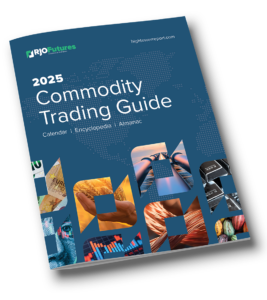Here, we provide a brief overview of pairs trading. Pairs trading, also known as Statistical Arbitrage Trading is defined as trading one financial instrument or basket of financial instruments against a second financial instrument or basket of financial instruments: long one and short the other.
What is Pairs Trading?
In pairs trading, you are matching a long position with a short position in two different assets with high correlation. Because this is a market neutral strategy, it allows the trader to make a profit in almost any market condition. The foreign exchange (FX) markets provide traders and investors with potential to capture market opportunities through pairs trading outside of (or in addition to) standard futures trading. Using the pairs trading formula in an overall trading strategy could potentially create new avenues of opportunity capture. Pairs trading is common and easier to understand when looking at it through the lens of currencies due to the high correlation between different currencies.
How Does Pairs Trading Work
Let’s use the euro and the USD as an example. Historically, the two currencies track each other pretty close, if one experiences a dip, the other is likely to experience a dip and vice versa for a surge. Let’s say the price of the USD goes up and the euro doesn’t move much. A trader would execute a pairs trade by purchasing a euro contract (long) and selling a USD contract (short) because they would assume that the two currencies would eventually even out. If the price of the euro went up, the trader would turn a profit from long position they bought on the euro. If the price of the USD dropped, the trader would turn a profit from the short they put on the USD when they opened the trade.
A pairs strategy is basically speculating on the philosophy that “water always finds its level”. There are several specific benefits of pairs trading formula that those trading the straight futures markets may find to be attractive component in serving their overall trading strategy.
Key Benefits of Pairs Trading
The futures pairs trading formula can be an attractive option to slower traders because outright futures trading can have days when the markets tend to move farther faster, which can be problematic for slower traders. Futures pairs trading may offer a more paced solution to accommodate this trading style. Because pairs trading has more back and forth movement than outright futures trading, this can enable the pairs trader more opportunity to manage the trade for a profit.
Another benefit of futures pairs trading is that this type of trading reduces the volatility of the trade overall and can provide the trader with more opportunity to trade in a wider range of market environments. Traders can get exposure to a vast amount of currency pairs through pairs trading, allowing them to express an opinion on many different currency pairs. Traders may, therefore, want to focus their efforts on the most popular and liquid trading currency pairs which are the most popular and most liquid. Some of the most heavily traded pairs in pairs trading include:
- EUR/USD
- GBP/USD
- USD/JPY
- AUD/USD
- USD/CAD
- USD/CHF
Just because several pairs to trade are available, however, does not mean that traders and investors should trade each set of pairs. Some pairs, such as the EUR/USD, are far more popular, and thus may be far more liquid, than a less popular pair like the USD/ZAR.
The Significance of Liquidity in a Pairs Trading Strategy
Liquidity is incredibly important when trading in any market. And pairs trading could offer plenty of liquidity and be used within a pairs trading strategy. Deeper liquidity may potentially allow the trader or investor to enter or exit positions with less slippage. In pairs trading, although stop prices are never guaranteed to fill at the desired price level, pairs that are more liquid may potentially see execution prices that are at or closer to the desired price level. Deeper liquidity in pairs trading may also provide a tighter bid/ask spread. Because there are no commissions charged for cash FX trades, dealers and brokers make their money from the difference between the bid and ask.
The USD/ZAR, a less liquid market in the pairs trading platform, for example, could see a bid ask spread such as 12.4774 at 12.4861. This spread has a notably wider gap between the bid and the ask, or the prices at which the trader or investor can buy and sell. Because the real market is somewhere in the middle, this means that the trader or investor is buying further above the market and selling further below the market. Nevertheless, in pairs trading a wider gap between the bid and ask prices means that the trader or investor will get a less desirable fill price, giving up edge in the process. Not only that, but if a stop order is triggered, the actual fill price could be substantially above or below the targeted level.
Commissions and/or fees should be considered when trading, even in pairs trading. The wider the bid/ask spread on a currency pair in pairs trading, the more the trader or investor is paying in transaction costs. These costs can impact net performance and can even mean the difference between profits and losses.
In pairs trading, although traders can trade as many pairs as they like, it may potentially be best to focus on the major trade pairings, and to even narrow that focus to no more than a couple of pairs to trade at a time. Doing so may help to keep transaction and slippage costs lower while allowing the pairs trader or investor to participate in multiple markets.



